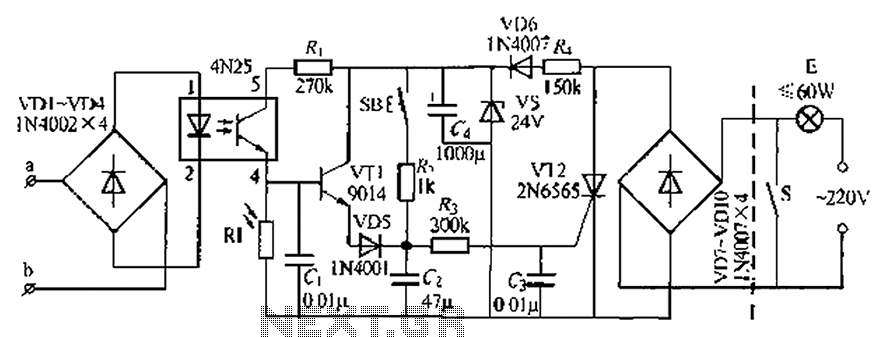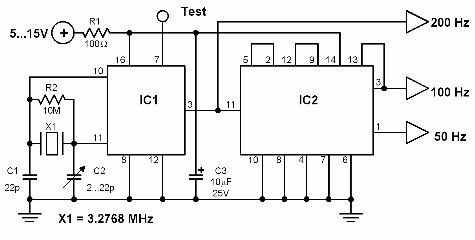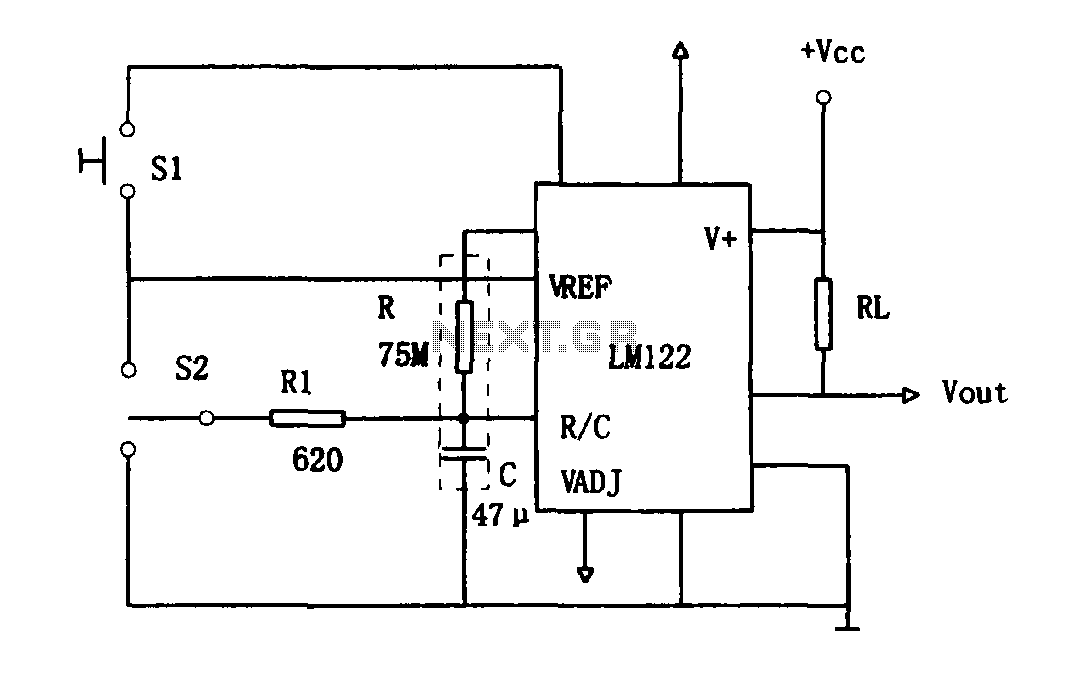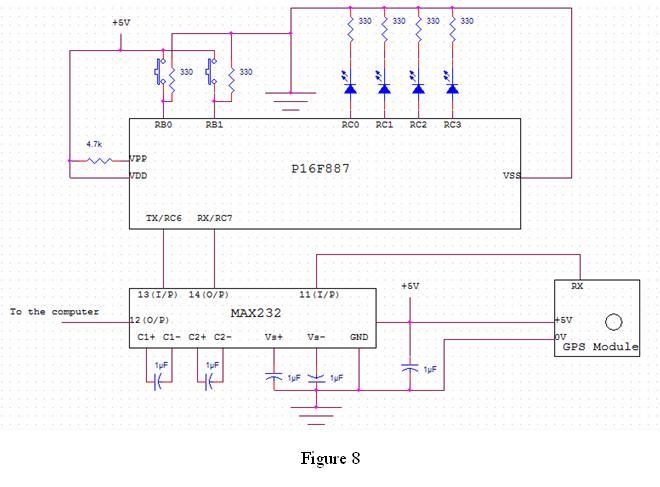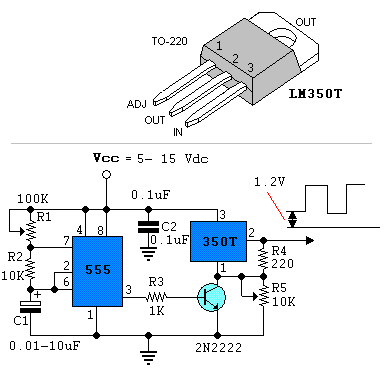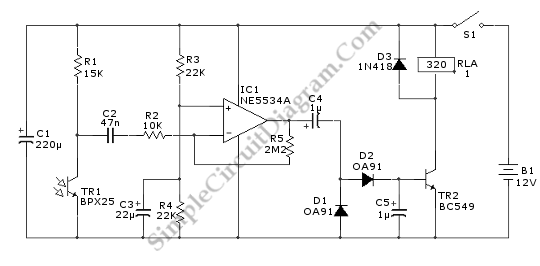
Basic Timer Control with NE555
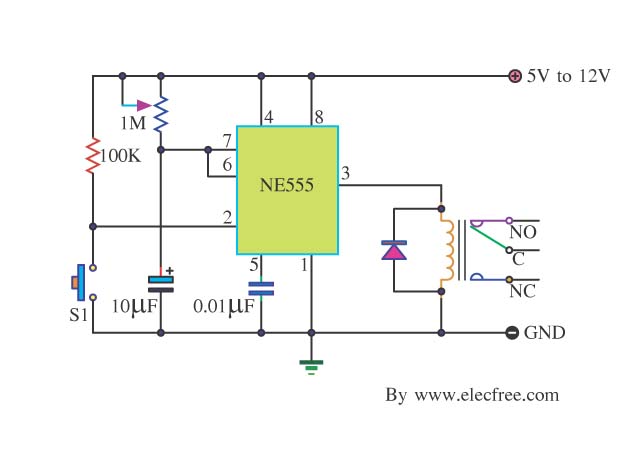
Many friends take an interest in the circuit involving the highly popular IC 555, which is an integrated circuit. This circuit sets the time in a basic manner.
The IC 555 timer is a versatile and widely utilized component in electronics, functioning primarily in astable, monostable, and bistable modes. In its astable configuration, the IC 555 can generate a continuous square wave output, making it ideal for applications such as clock pulses, tone generation, and LED flashing. The frequency of oscillation is determined by two external resistors and a capacitor connected to the circuit, allowing for easy adjustments to the timing characteristics.
In monostable mode, the IC 555 can produce a single output pulse of a specified duration in response to an external trigger. This configuration is commonly used in timers, pulse width modulation, and event counting applications. The duration of the output pulse is controlled by the values of a resistor and capacitor connected to the circuit.
The bistable mode allows the IC 555 to act as a flip-flop, maintaining its output state until triggered by an external signal. This feature is useful in applications such as toggle switches and memory storage.
The IC 555 is available in various package types and can operate over a wide range of supply voltages, typically from 4.5V to 15V. Its ease of use, reliability, and low cost have made it a staple in both educational and professional electronic projects. Proper understanding of the timing equations and component selection is essential for optimizing the performance of circuits utilizing the IC 555.As friends many take an interest the circuit about IC 555 which be integrated highly popular that circuit. I then lead the circuit sets the time be Basic. 🔗 External reference
The IC 555 timer is a versatile and widely utilized component in electronics, functioning primarily in astable, monostable, and bistable modes. In its astable configuration, the IC 555 can generate a continuous square wave output, making it ideal for applications such as clock pulses, tone generation, and LED flashing. The frequency of oscillation is determined by two external resistors and a capacitor connected to the circuit, allowing for easy adjustments to the timing characteristics.
In monostable mode, the IC 555 can produce a single output pulse of a specified duration in response to an external trigger. This configuration is commonly used in timers, pulse width modulation, and event counting applications. The duration of the output pulse is controlled by the values of a resistor and capacitor connected to the circuit.
The bistable mode allows the IC 555 to act as a flip-flop, maintaining its output state until triggered by an external signal. This feature is useful in applications such as toggle switches and memory storage.
The IC 555 is available in various package types and can operate over a wide range of supply voltages, typically from 4.5V to 15V. Its ease of use, reliability, and low cost have made it a staple in both educational and professional electronic projects. Proper understanding of the timing equations and component selection is essential for optimizing the performance of circuits utilizing the IC 555.As friends many take an interest the circuit about IC 555 which be integrated highly popular that circuit. I then lead the circuit sets the time be Basic. 🔗 External reference
Warning: include(partials/cookie-banner.php): Failed to open stream: Permission denied in /var/www/html/nextgr/view-circuit.php on line 713
Warning: include(): Failed opening 'partials/cookie-banner.php' for inclusion (include_path='.:/usr/share/php') in /var/www/html/nextgr/view-circuit.php on line 713
